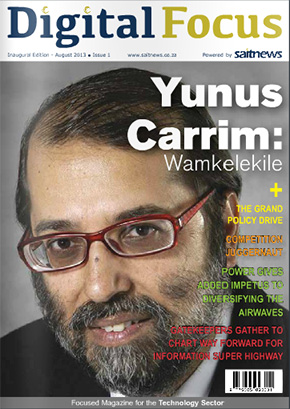Finding the ‘now’ in Big Data
 Effectively using Big Data is not about sifting through a wealth of historical data, it is about focusing on the ‘now’ within the data, says Ayanda Dlamini, Business Development Manager of LGR Telecommunications.
Effectively using Big Data is not about sifting through a wealth of historical data, it is about focusing on the ‘now’ within the data, says Ayanda Dlamini, Business Development Manager of LGR Telecommunications.
Amid the daunting volumes of digitised data now in existence around the world, it is easy for companies to go off-track in their attempts to harness Big Data.
We see many misconceptions arising about the meaning of the term Big Data, and the approaches that should be taken to derive business value from it.
Big Data describes much more than large amounts of historical data residing in enterprise databases. More importantly, Big Data also encompasses new data emerging every second from multiple external courses, including email, mobile and social media, and it is here that business should be looking for strategic insights.
Using BI tools to analyse historical data to make forward-looking decisions will often lead to inaccurate conclusions. The truly valuable information resides outside the organisation in the ‘real world’, where customers are networking and sharing on an unprecedented scale. Big Data management is about managing the growing volumes, variety, velocity and complexity of global data to determine what customers are saying now, how market sentiments are changing, and how the business should react. Trends are key to understanding customer behaviour. So, effective use of Big Data depends on finding the ‘now’ in structured and unstructured data.
Social media analysis is key
To track and process the ‘now’, businesses have to integrate social media into their BI. Social media allows business to remain in touch with what customers and their networks are saying about both you and your competitors. It allows business to consider external factors that will impact market behaviour. It allows them to track trends within networks likely to influence their customers’ future buying patterns. For example, if a customer’s social network is actively praising a rival telecoms service provider, and you’re aware that the customer is due for an upgrade soon, you can deduce that there is a chance you may lose the customer to the rival network and take steps to make a compelling offer to the customer.
This is where the influence of velocity comes in – it’s about the speed at which market forces change and the speed at which businesses can react accordingly. Businesses that rely on historical data to make forward-looking decisions cannot hope to compete effectively. With advanced Big Data tools incorporated into their BI systems, they are able to identify changes in the market in near real time, and change their strategy accordingly.
Inasmuch as the aim of BI is still to deliver a good customer experience, optimise product development and make sound business decisions, businesses need to look beyond their own datasets, to assess what customer experience means in the context of how people live and to understand their own operations as part of a global context.
Including social media into BI also allows us to extend to the incorporation of data generated by mobile into the BI mix. With vast numbers of customers accessing social media via their smart mobile devices, we are able to increase our understanding beyond their networks and sentiments to include geographical data too. Businesses need look at this valuable data from various sources in order to profile individual clients, discover what drives them, and predict what they might do in future.
Beginning the journey
To do so, businesses do not have to embark on extensive and costly restructures of their data warehouses and BI systems. They can start small, by integrating social media APIs into the BI suite to gain immediate insights into key questions. Analysing data in social media platforms doesn’t necessarily mean you have to analyse all the data – you can tap into only what is relevant to your business to understand the now of your environment, and what you need to react to. This may be as simple as how many people have liked your page, blogged about you or tweeted about your product. Determine what component of this unstructured dataset is relevant to your business requires careful strategic planning, however.
Enterprises need to be asking: ‘What can BI do to create survival mechanisms and contribute to our strategy? What will our questions be?’ By asking these questions, enterprises will identify what sources they want to tap, and how they wish to analyse and present the resulting information.
By Ayanda Dlamini, Business Development Manager, LGR Telecommunications










